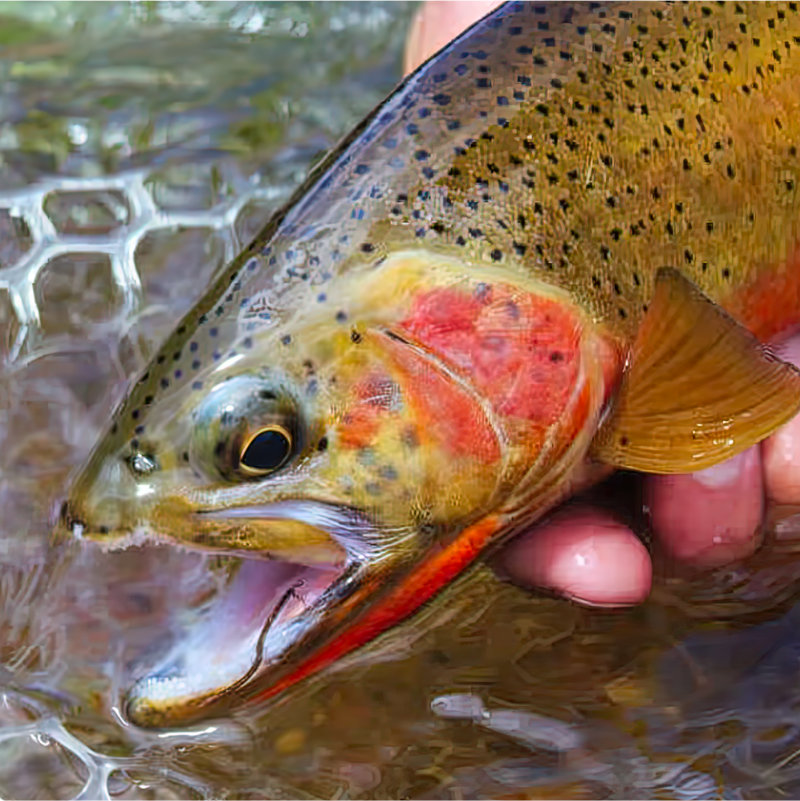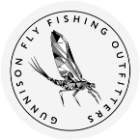Cutthroat
TROUT
Colorado’s Gem: The Native Cutthroat Trout
The only strain of trout native to Colorado, the cutthroat trout is many anglers’ most prized species to target on the fly in the Centennial State. Of the 10 recognized strains of cutthroat trout that still exist in North America today, three of them are native to Colorado’s waters: the Colorado River Cutthroat, the Greenback Cutthroat (which is the state fish!), and the Rio Grande Cutthroat. There are other strains of cutthroat that have been introduced to Colorado, such as the Snake River Fine-Spotted Cutthroat. Cutthroat trout are often considered to be the most beautiful strain of trout in Colorado, and the trout that lives in the most beautiful parts of the state. Cutthroat trout, although their appearance varies by strain, can generally be identified by the red slash along the underside of their jaw, which is where their name derives from. Cutthroat, although they live in a lot of Colorado’s famous rivers, can often be found in stunning high-alpine lakes, some of them tucked against craggy mountain peaks above treelines. Many anglers hike hundreds of miles every summer to chase high alpine cutthroats, who can live in some of the most remote and breathtakingly beautiful parts of the Centennial State. On this page, you will learn more details about Colorado’s treasured cutthroat trout.
The Cutthroat Trout: Where They Live, When They Spawn, and More.
Cutthroat trout in Colorado can be found in most of the state’s most famous rivers, such as the Gunnison, the South Platte, and the Colorado. Additionally, cutthroats are plentiful in high alpine streams and lakes, many of them at or above treeline. Cutthroat trout can become very large in these lakes, especially in ones that do not see a lot of angling pressure. While most cutthroat caught in the Centennial State are between 8 and 14 inches in length, they often grow up to 20 inches, and cutthroat over 24 inches are caught every year in Colorado. These fish can also reach truly gargantuan size; the state record cutthroat was a whopping 33 inches in length! A general rule of thumb in Colorado is that the further an angler is willing to walk to reach an alpine lake, the better the fishing can be for cutthroat trout. If long hikes are not your thing, targeting Colorado cutthroat trout in one of the state’s larger rivers or meandering streams is an exciting and fulfilling experience.
Cutthroat trout, like rainbow trout, spawn in the spring, usually between March and June, although the specific timing depends on the waterway. Cutthroat spawn earlier in lower-elevation rivers and streams than in alpine lakes, because lower-elevation water temperatures warm up earlier than at at higher elevations. When it’s time to spawn, female cutthroat trout find a shallow and gravelly section of rivers or streams where they beat their tails against the river’s bottom to create a spawning bed known as a redd. They then lay their eggs on this bed, which male cutthroat trout fertilize. Often in Colorado, a rainbow trout will fertilize cutthroat eggs, creating a subspecies known as cutbow trout. Because rainbow and cutthroat trout are very similar genetically, they can create fertile offspring.
Anglers are reminded to avoid walking over redds in the spring or fishing for spawning fish so that cutthroat populations in Colorado can remain strong. Otherwise, fishing for cutthroat trout in beautiful Colorado is a thrilling and fulfilling experience that should be on any angler’s bucket list.

